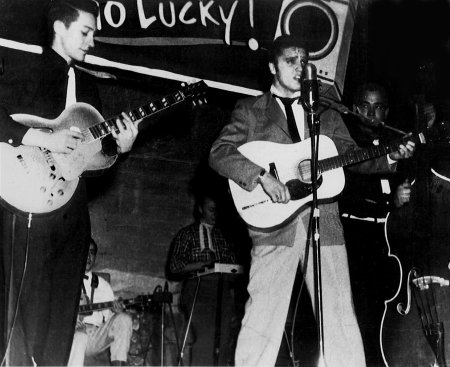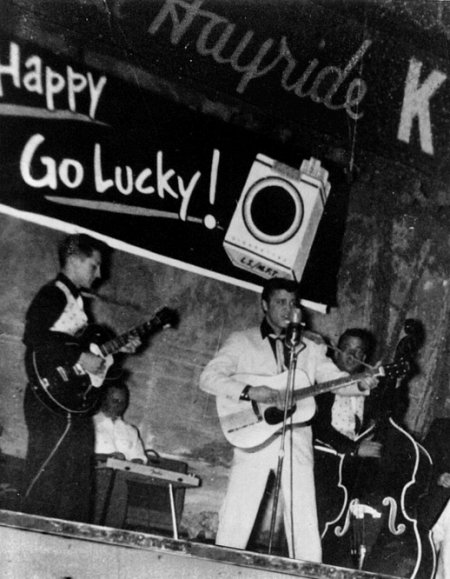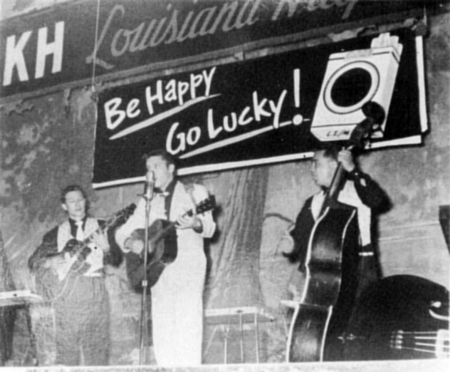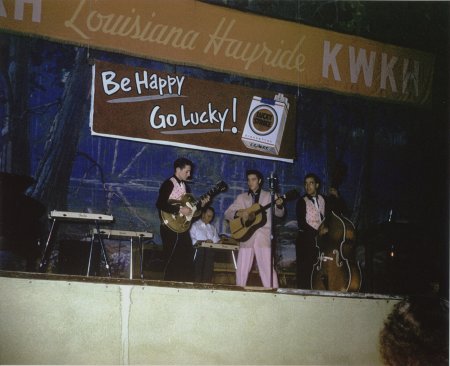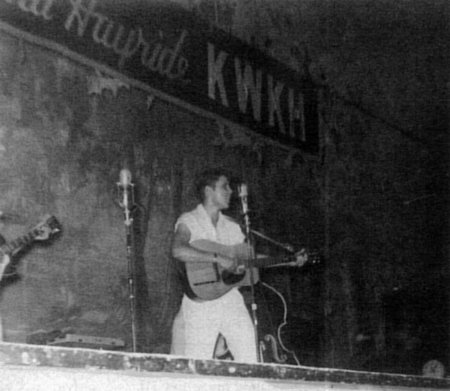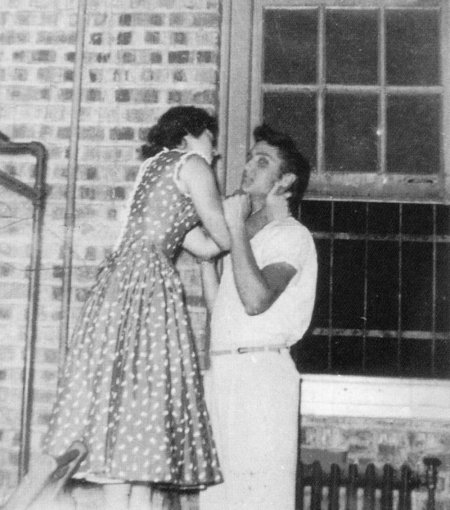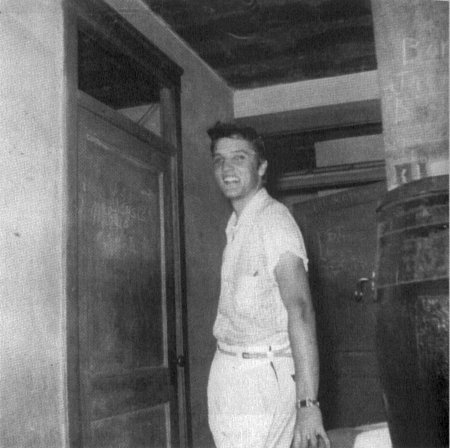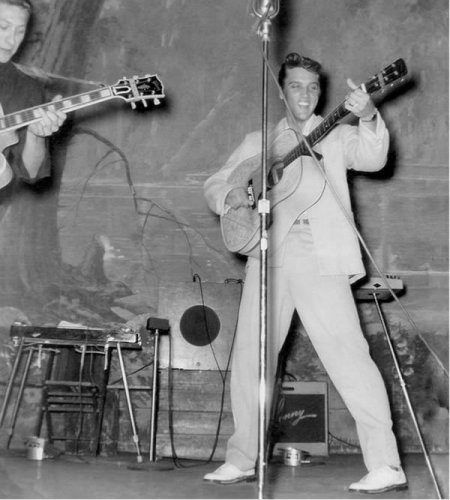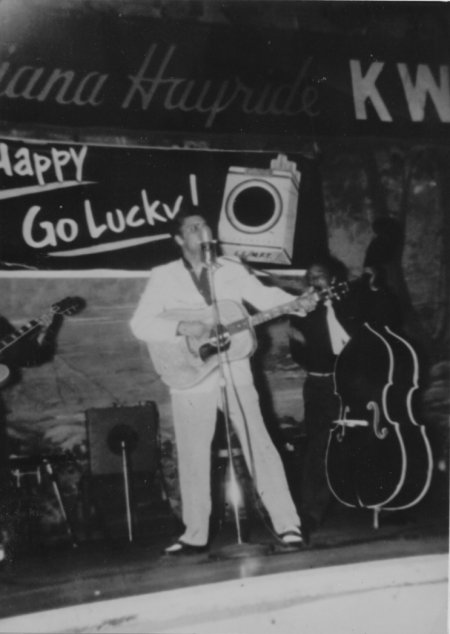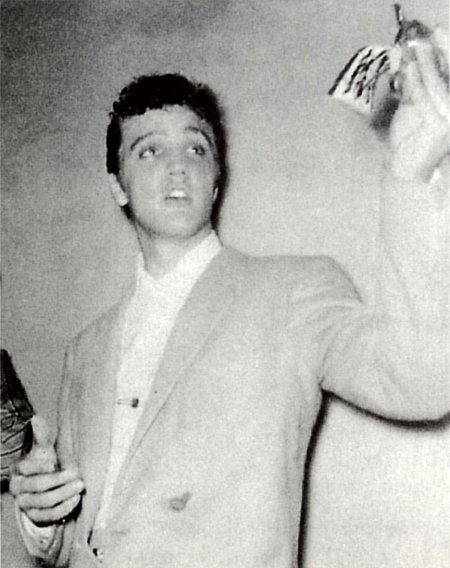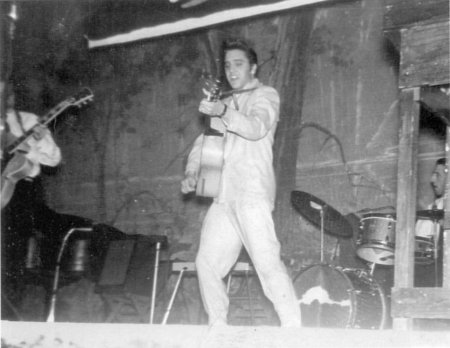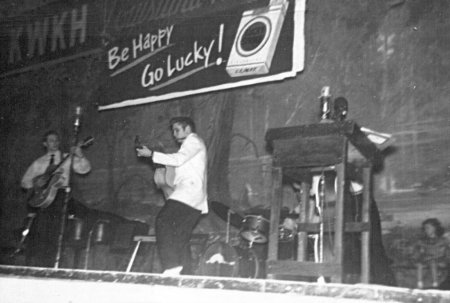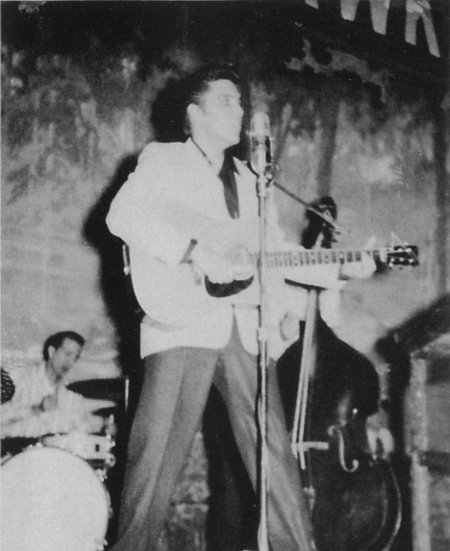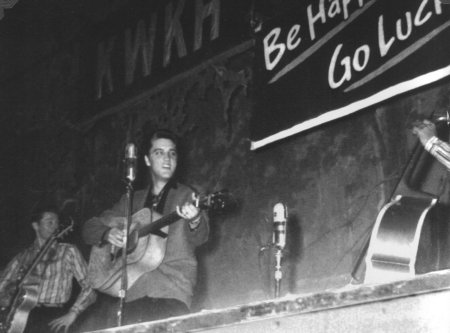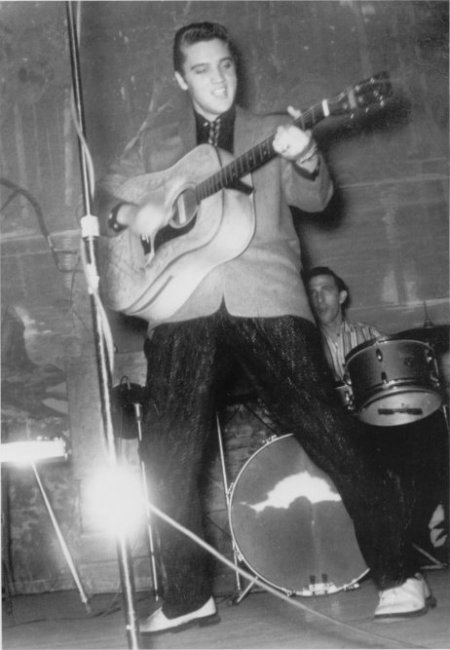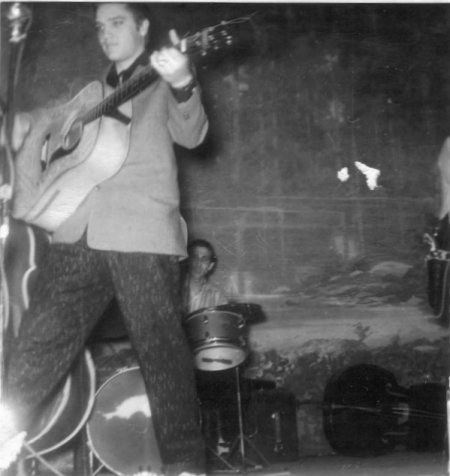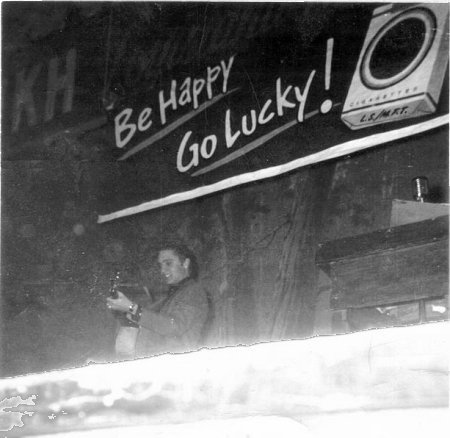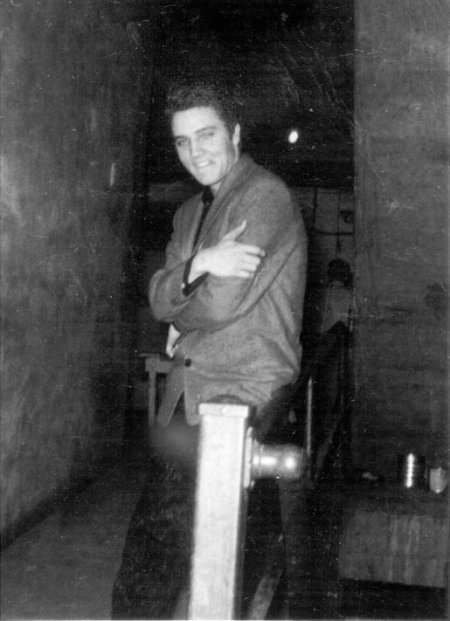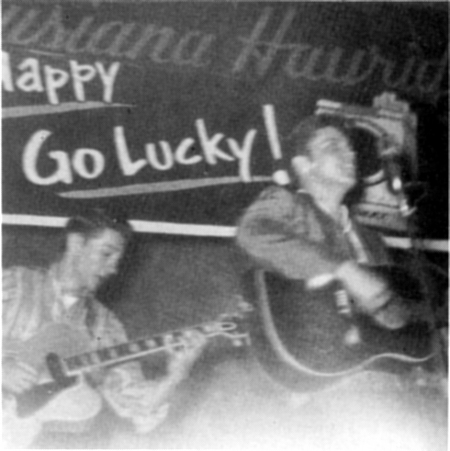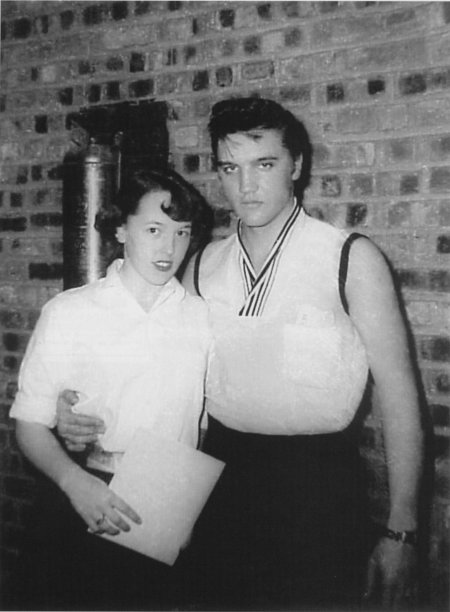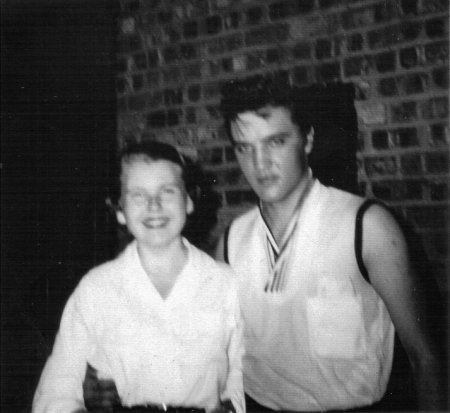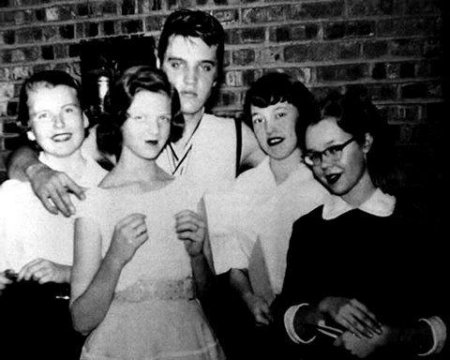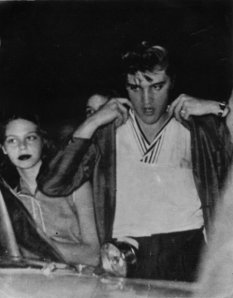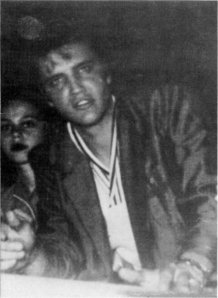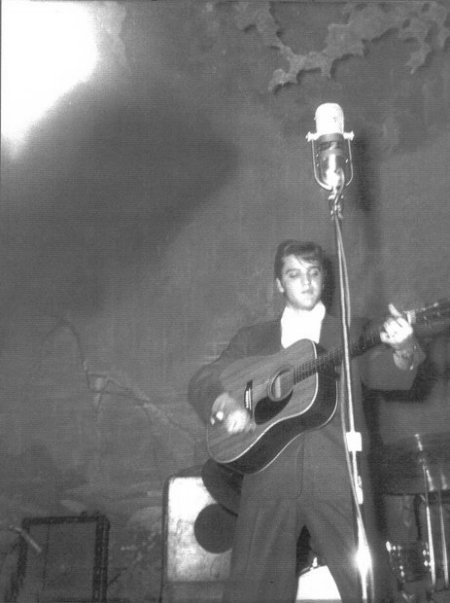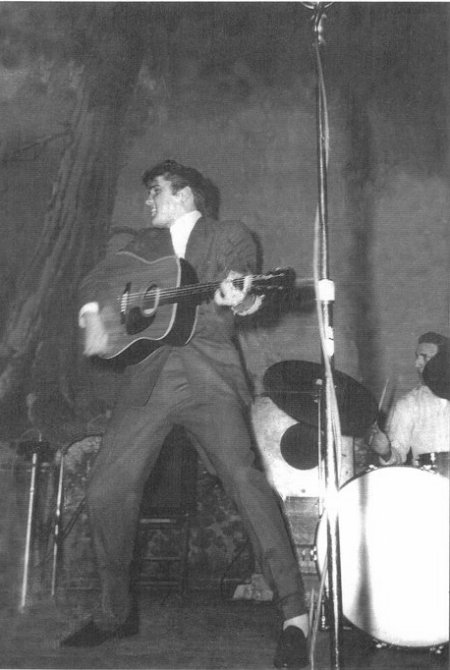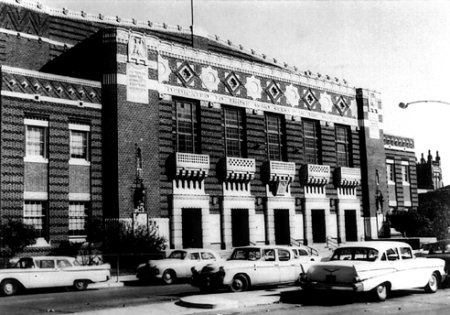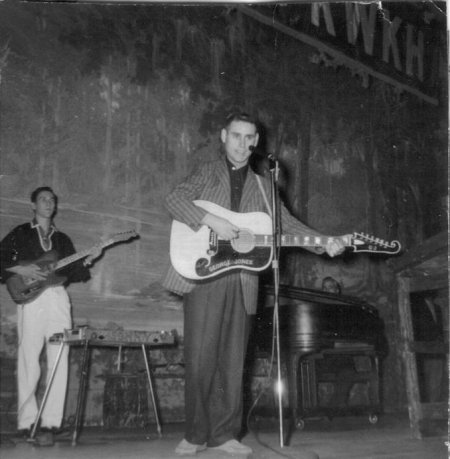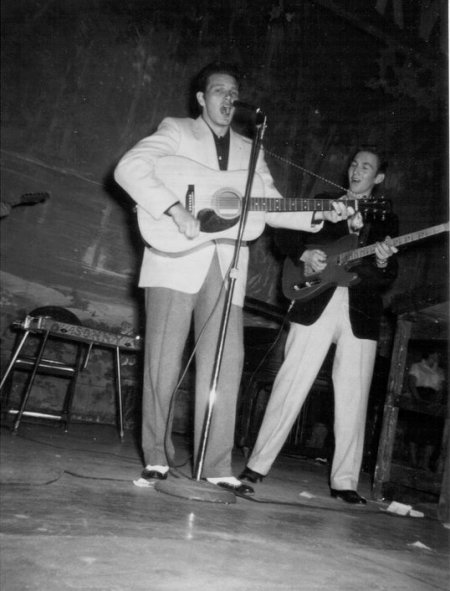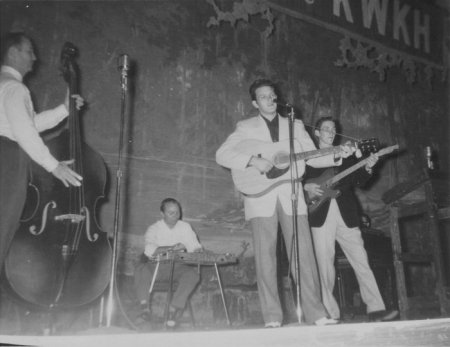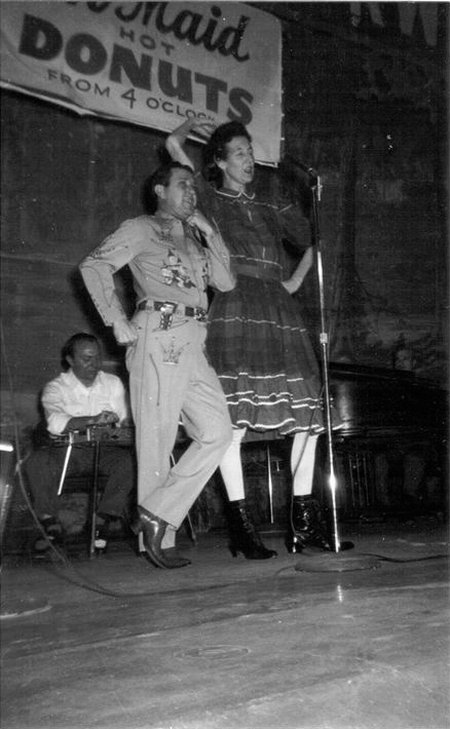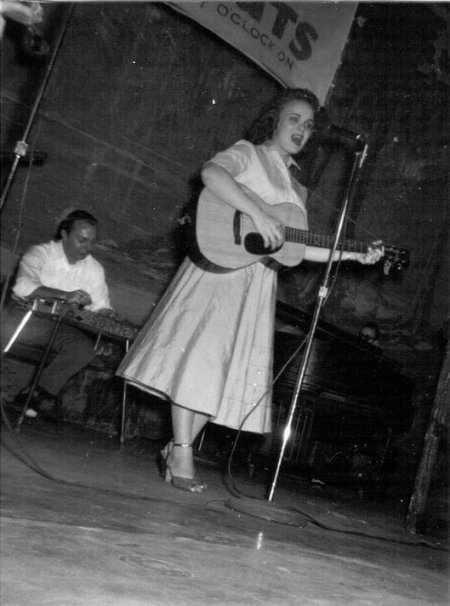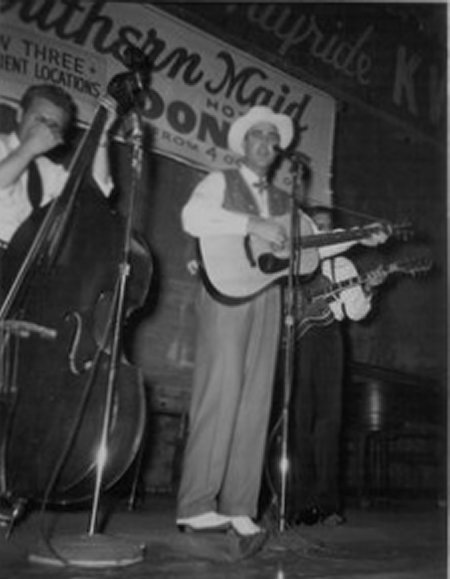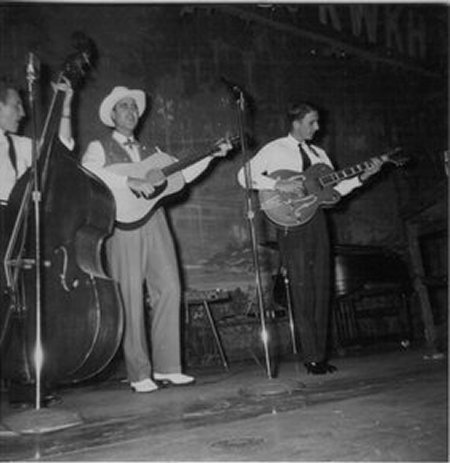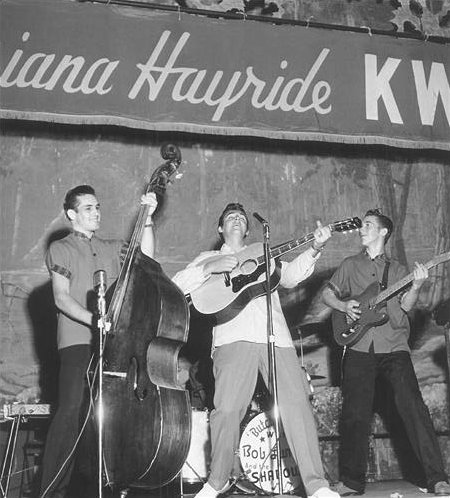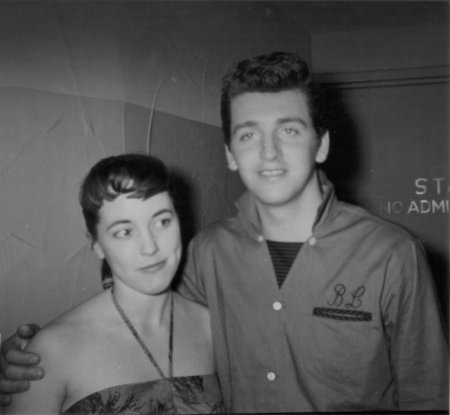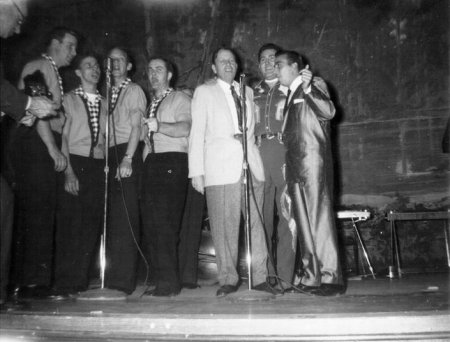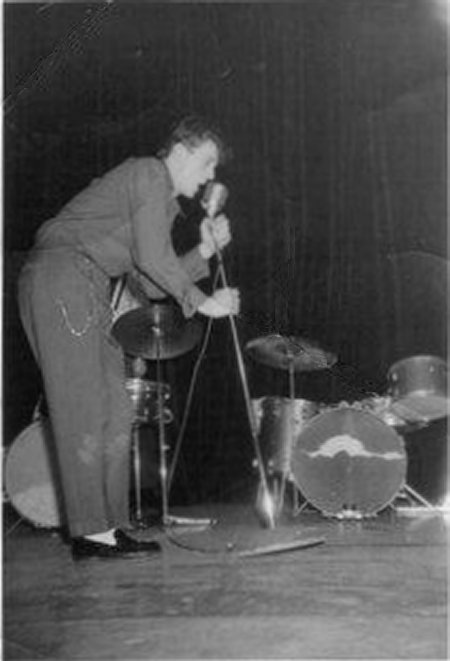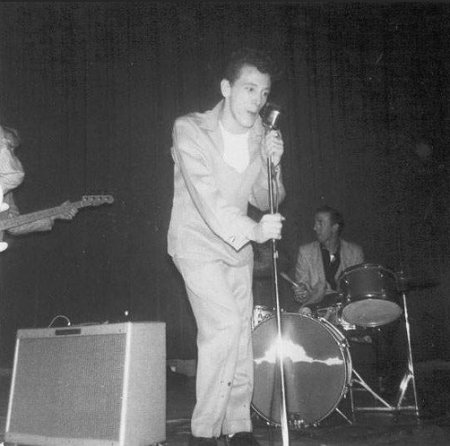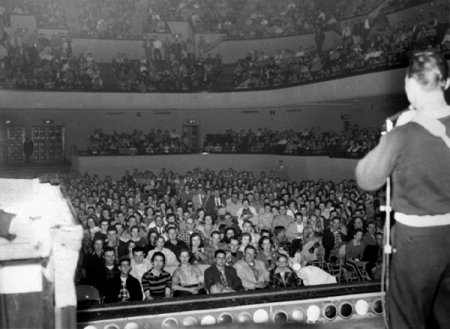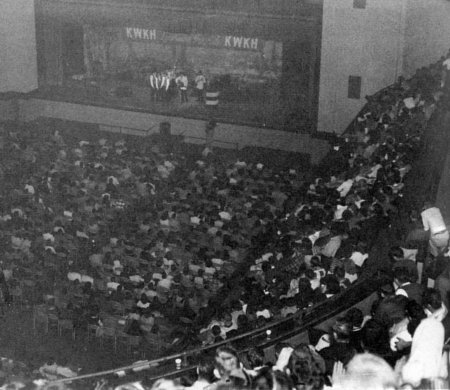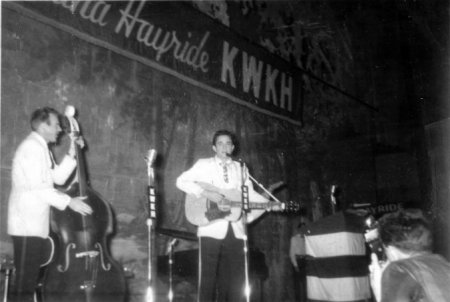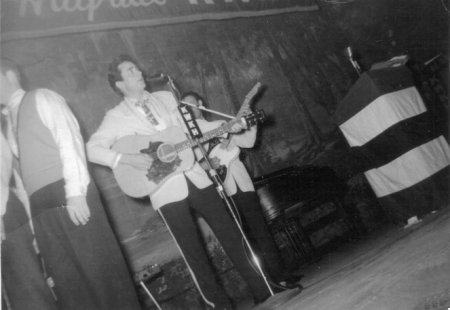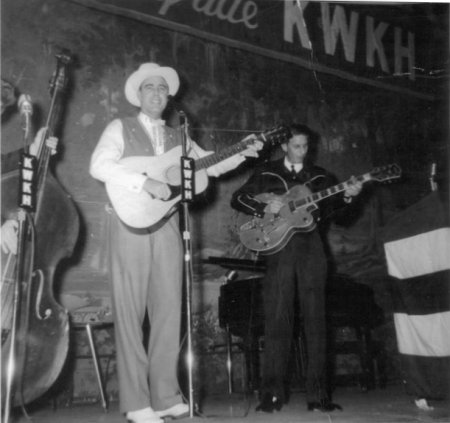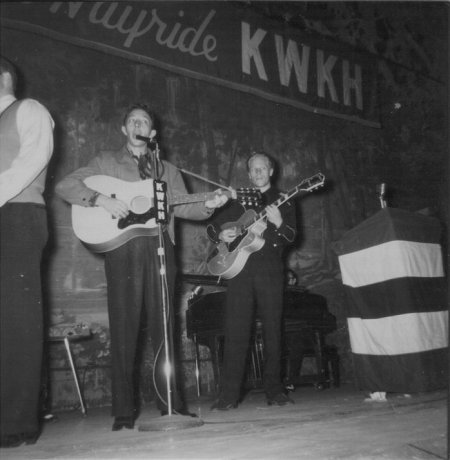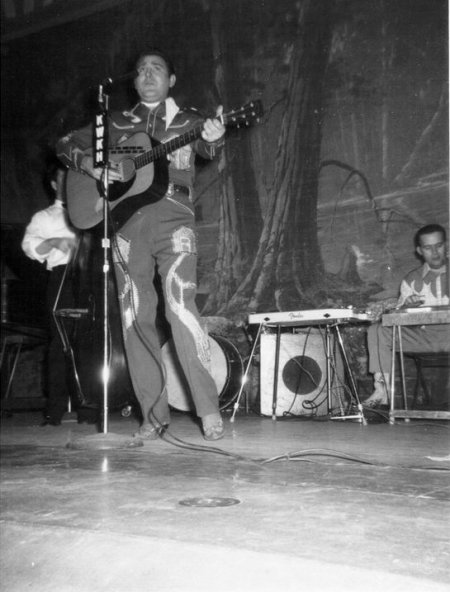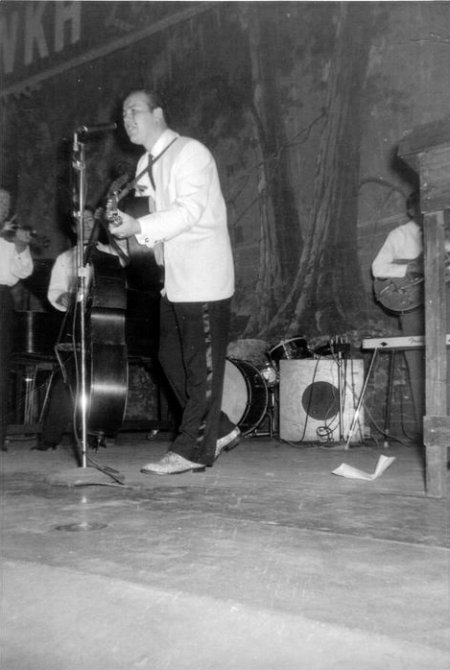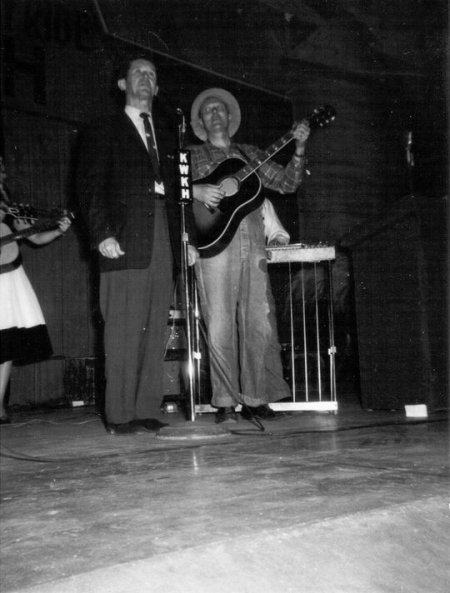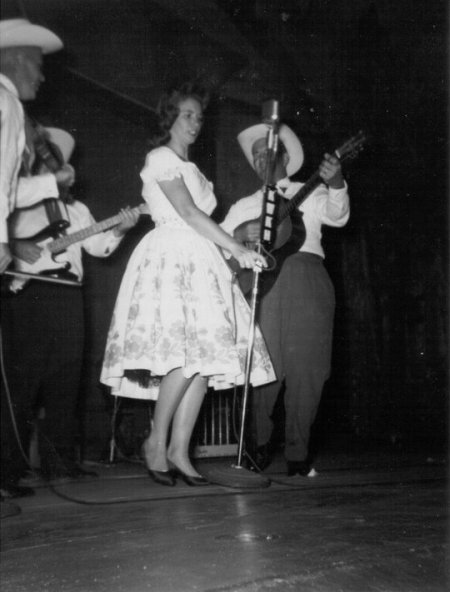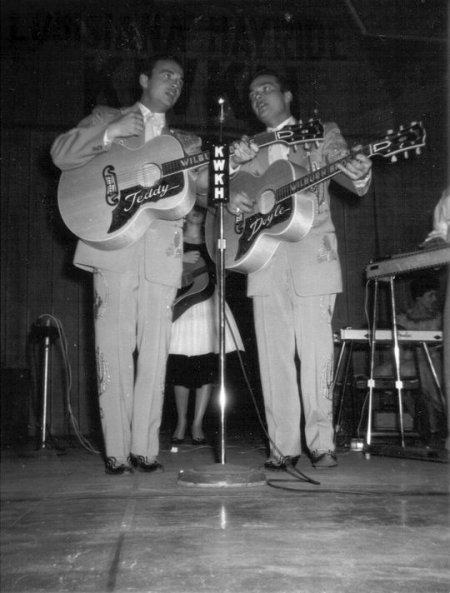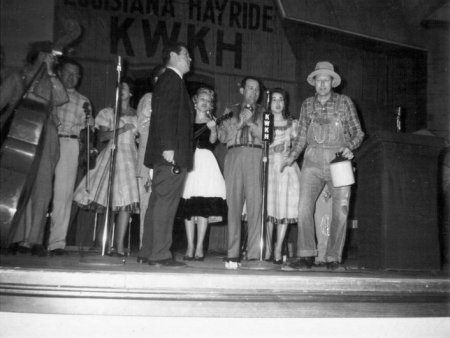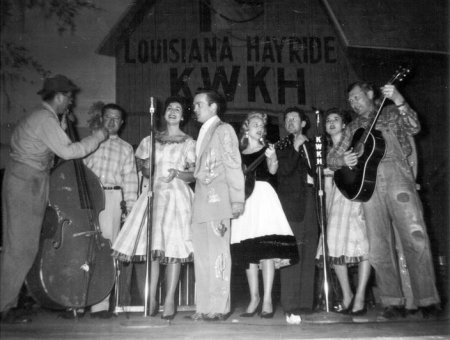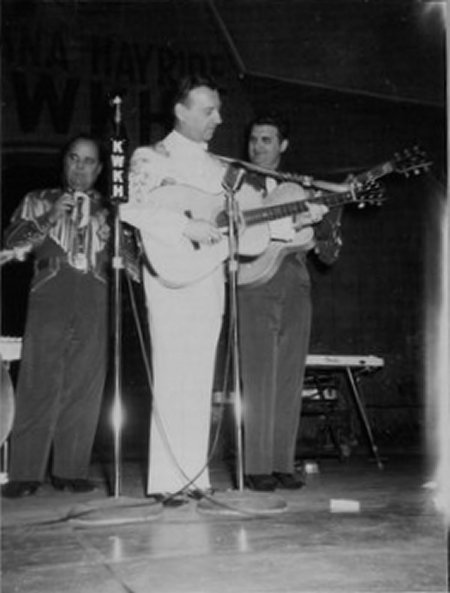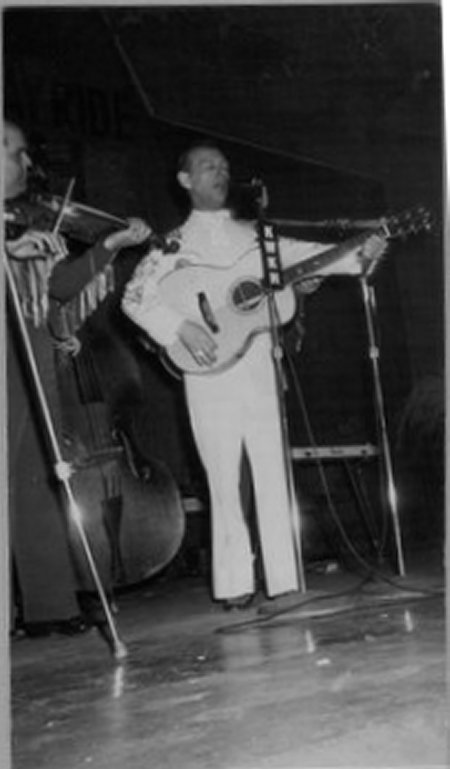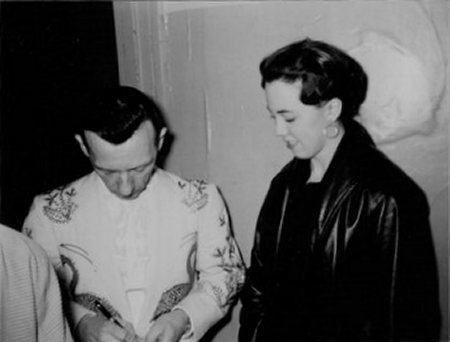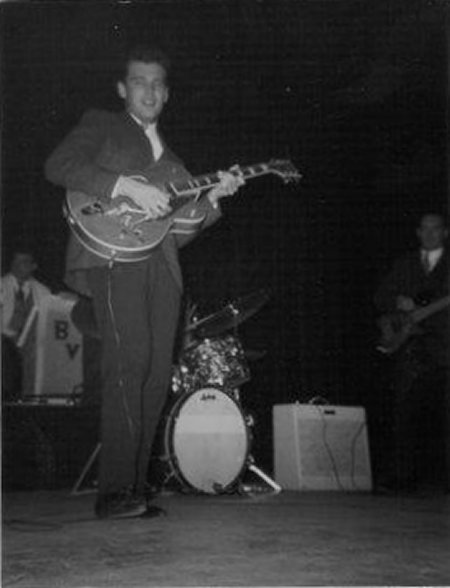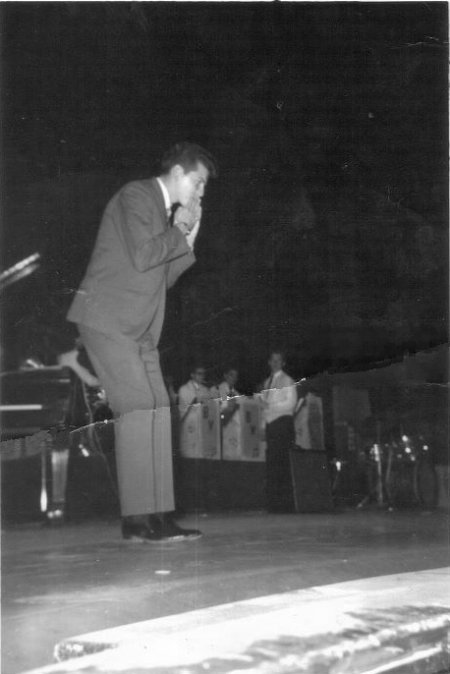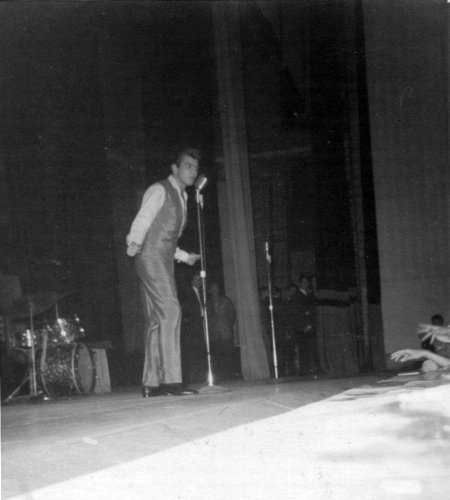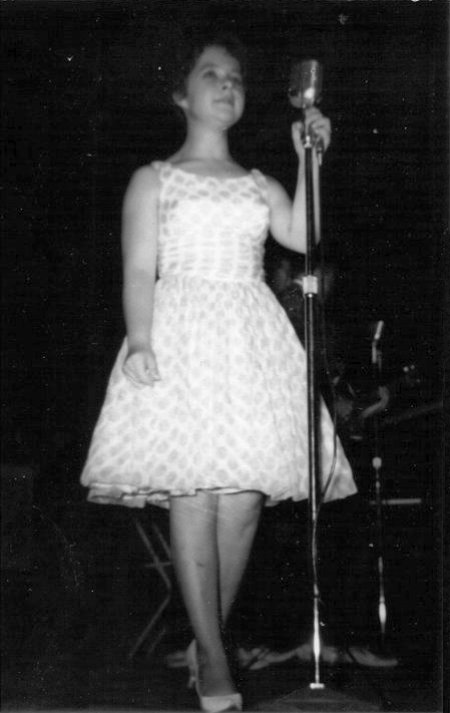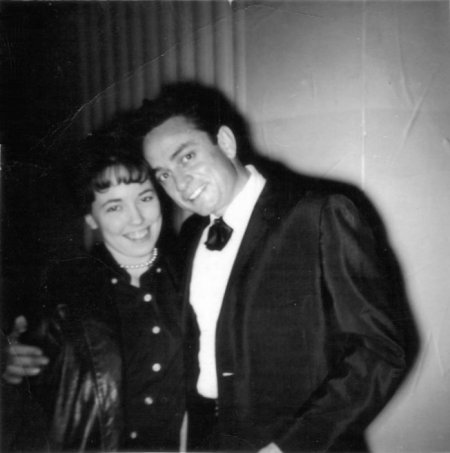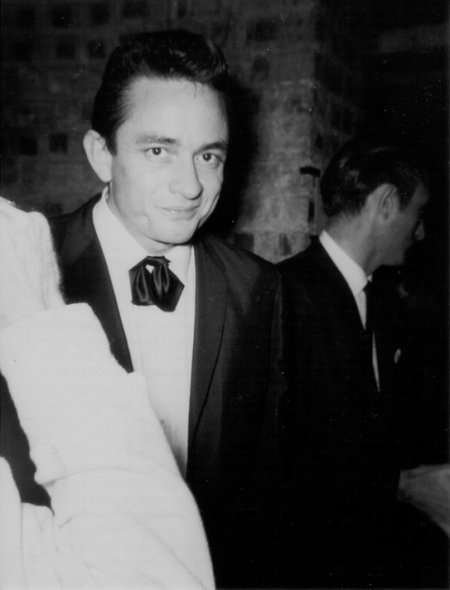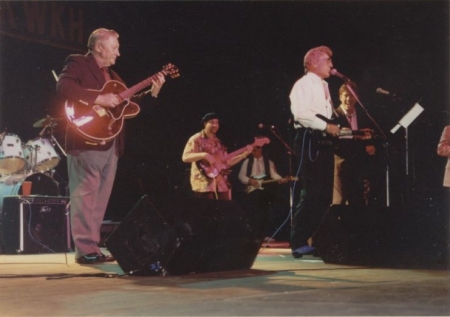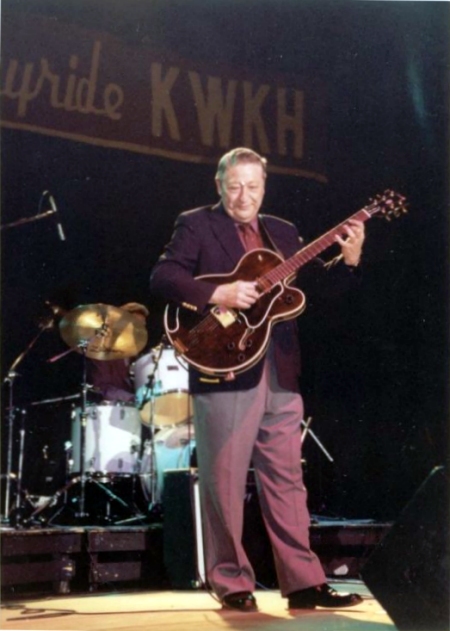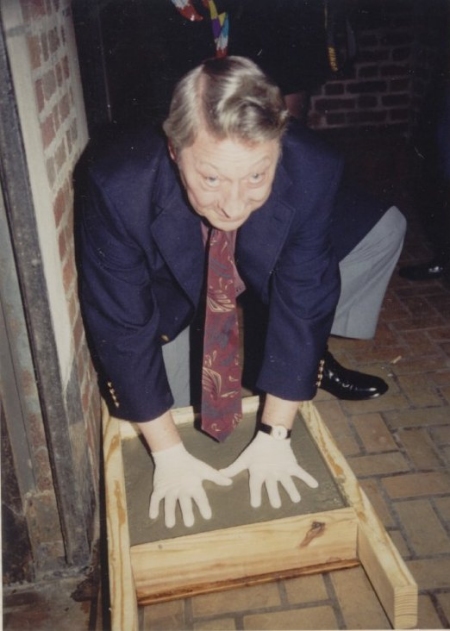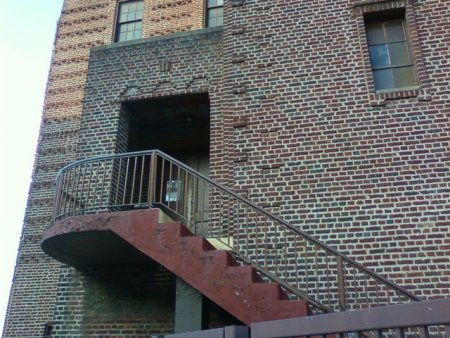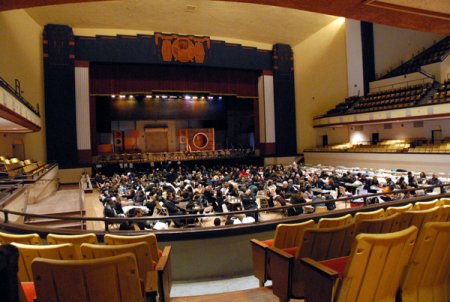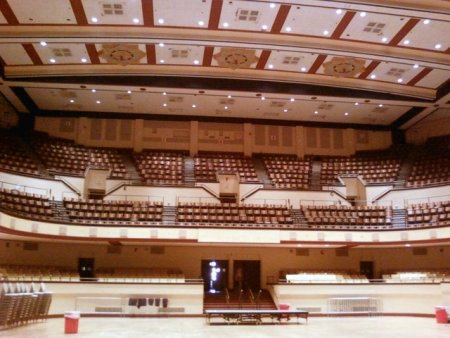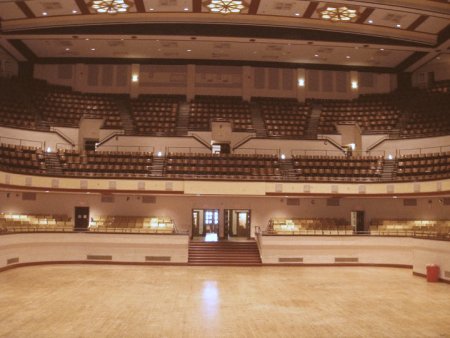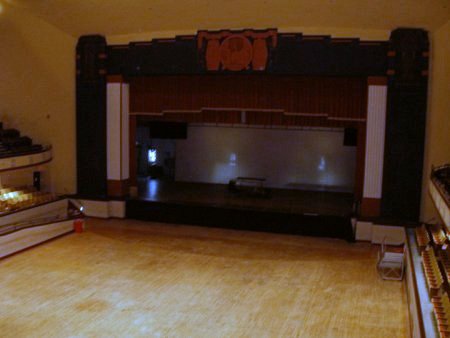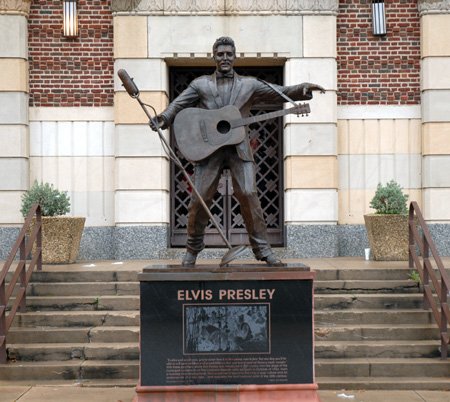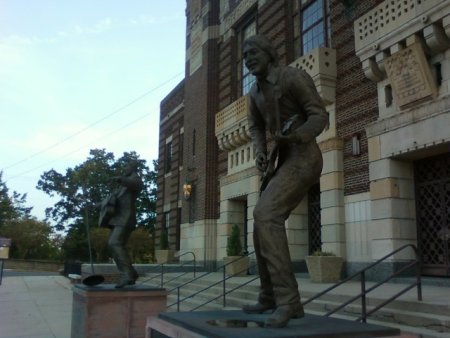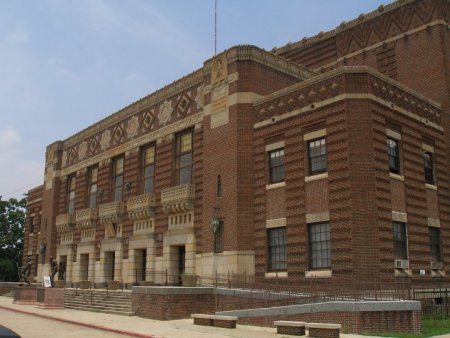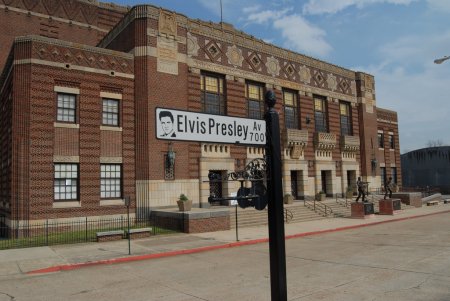 |
Municipal Memorial Auditorium
Designed by the architectural firm of Jones, Roessle, Olschner & Wiener, Shreveport's Municipal Memorial Auditorium, often called, "The "Muni," was constructed at 705 Grand Avenue by Ashton Glassell Co., Inc. in 1926 and completed in 1929. The building is said to be one of the south's largest examples of Art Deco and was constructed as a memorial to the servicemen of World War I. The front façade is intensively ornamented and features carved limestone and brick balconies flanked by two massive bas relief eagles clutching stylized swords which hold limestone banners with inscriptions reading: “The world must be made safe for democracy. Woodrow Wilson,” and “The work of righteousness shall be peace. Isaiah 37:17.” 1
The building is five stories high. On the first floor, the five-door main entrance leads to a large, rectangular, two-story lobby and entrance to the auditorium seating area. The 54 ft. high stage with proscenium arch is located directly across the vast, 6300 square foot arena and the auditorium with its mezzanine and balconies had an initial capacity of around 3,400 - 3,800. The second floor of the auditorium has meeting rooms and dressing rooms and the mezzanine level of the auditorium space. Balcony seating occupies most of the third level, which also includes a projection room and a ballroom is located on the fourth floor. The basement contains storerooms, equipment rooms, and public restrooms below the lobby.1
Since its inception, the Auditorium has hosted public events that include musical concerts, theatrical productions, sporting events, Mardi Gras balls, ice skating shows, conventions, and the Shiner's circus. However, without argument, the most significant tenant of the building has been KWKH's Louisiana Hayride. The Louisiana Hayride was the product of Shreveport AM radio station KWKH, founded in 1922, and in 1924 the sole property of W. K. Henderson who purchased the call letters of his own initials, from a Georgia station. It entered the country music arena in late 1927 with the premiere of the Jimmie Davis Show, who himself later served two terms as the state's governor. In the 1930s the station was bought by the Shreveport Times and joined a network airing the music of live country bands and singers. It featured two barn dance format precursors to the Louisiana Hayride: the weekly Hillbilly Amateur Show on Sunday afternoons in 1936, which was replaced by the Saturday Night Roundup in 1940, both broadcast live from the stage of the Municipal Auditorium. World War II caused the cancellation of the Roundup.2
The Hayride was referred to as the "Cradle of the Stars," for launching the careers of some of the greatest names in Country and Rockabilly music, often serving as sort of a farm system for its competitor, the Grand Ole Opry. Horace Logan was the show’s producer and chief emcee and was given free rein, and a small budget, by station manager, Henry Clay, to design a weekly country music show that would fill a three hour slot. It debuted on April 3, 1948 and featured the Bailes Brothers, Johnnie (Wright ) & Jack (Anglin) and the Tennessee Mountain Boys featuring Miss Kitty Wells, the Four Deacons, Curley Kinsey, the Tennessee Ridge Runners, Harmie Smith, the Ozark Mountaineers, the Mercer Brothers, and Tex Grimsley & the Texas Playboys. All acts hosted their own daily shows on KWKH and played personal appearances during the week. According to Johnny Wright and Kitty Wells, the show faltered at first, not really taking hold until August and the arrival of Hank Williams.2
Hank Williams made his first appearance on August 7, 1948 and less than a year later, on June 11, 1949 premiered on the stage of the Grand Ole Opry. On his last Hayride show before graduating to the Opry, Hank encored the song “Lovesick Blues” seven times. That year Frank Page joined the Hayride's team and an announcer. Kitty Wells, who went on to become the first female superstar of country music, stayed with the Hayride through 1951 but returned often in later years.2
The Wilburn Brothers joined the cast in June of 1949 entertaining Hayride audiences for over two years and returning several times in the late fifties and early sixties for guest appearances. Slim Whitman joined the cast on April 7, 1950 followed by Webb Pierce a week later. Slim teamed up with musicians Hoot Raines and Curley Herndon and in 1953 his recording of “Indian Love Call” made him the first Hayrider to earn a gold record. He continued his tenure on the Hayride throughout the mid-fifties and returned many times to the Hayride in later years.2
In October of 1951, Faron Young, a singer in Pierce's band, made his Hayride debut and was a regular in a few short months. Hayride staff pianist Floyd Cramer first gained notoriety as a member of Webb’s band but later went on to become a Nashville A-Teamer and one of the greatest session piano men in music history. The Maddox Brothers & Rose arrived at the Hayride in November of 1951. Johnny Horton would star on the Hayride off and on beginning in 1952 and on September 13th, “Slim Whitman Appreciation Night”, Hank Williams, made a surprise visit to the Hayride to announce his return the following week. He would only be with the Hayride though just over three months before he died en route to an engagement in Ohio on New Year's Eve.2 Jim Reeves, who had been working as a deejay with Tom Perryman in Gladewater, started as an announcer with KWKH in the fall of 1952 and was added to the Hayride as a “Junior Announcer” in December. He launched his career in January when a scheduled performer missed an appearance and in a matter of a couple of month was off for the big time. Like others, he would return several times throughout the fifties.2 On October 16, 1954, Elvis, Scotty and Bill made their first appearance on the Hayride. Like the Maddox Brothers and Rose before them, they were one of the very few acts that made their appearance on the Opry first (see The Hillbilly Cat). Back in Memphis, the Commercial Appeal had announced:
Of their debut, Peter Guralnick wrote, The cheers that went up from the audience were encouraged by Frank Page and Horace Logan as they stood to the side of the Lucky Strike backdrop. The microphones hanging out over the floor were turned up when Scotty took a somewhat uncertain solo, and the audience politely responded. Elvis was visibly nervous, his knees were practically knocking together, and the jackknife action of his legs was about all, Sam Phillips was convinced, that was preventing him from blowing his brains out. The reaction was not all that different from the one he had gotten on the Opry—he was so ill at ease it was hard for the audience to really like him, even though it was clear to Sam that they might want to do just that, that they were ready, like Memphis audiences, to respond to the boy’s charm.3
The following month, Bill Sachs in Billboard noted that Country music was exceeding pop music and becoming the "biggest thing in entertainment". In the same piece he wrote, . . . Elvis Presley, 19-year-old comer in the c.&w. field, who guested on WWKH's "Louisian Hayride," October 16, and made such a hit that he was brought back a week later, has become a regular member of the "Hayride " forces, along with William Black and Winfred Moore (sic). The three record for Sun Records.4 Things would soon change.
Jack Barham, a photographer for the The Shreveport Journal at the time recalled first meeting Elvis while covering another performer on the Hayride. “I was going behind the curtain to get different angles to shoot. There was a kid lying down between the curtains there, with a guitar,” he recalled. “I stepped over him twice. I said, ‘Who the hell are you?’ He said, ‘I’m Elvis Presley, sir.’ ”5
It wasn't long before the audiences got younger and louder. It was on the Hayride that they first met D.J. Fontana, the staff drummer who generally played behind the curtain. During their tenure they would often tour with other Hayride acts like Jim Ed and Maxine Brown, Betty Amos and others and also perform on the Hayride's remote broadcasts in other cities when other events occupied the Municipal Auditorium. The Saturday night broadcasts of the Hayride eventually all but assured attendances in the venues they played within range.
Horace Logan noted that Elvis changed things, and after him there was just no going back. Guralnick also wrote that some of the Hayride veterans, like 27 year old Jimmy “C” Newman, would say, "we’d just stand in the wings and shake our heads. ‘It can’t be, it can’t last, it’s got to be a fad.’ . . . What he did was he changed it all around. After that we had to go to Texas to work, there wasn’t any work anywhere else, because all they wanted was someone to imitate Elvis, to jump up and down on the stage and make a fool of themselves. It was embarrassing to me to see it—Elvis could do it, but few others could." 3
Around November of 1955, fellow Sun artist Johnny Cash made his debut on the Hayride while just months before George Jones had auditioned at a remote broadcast in Conroe, TX which led to his signing. That November, much to the dismay of Colonel Parker, Elvis signed on for another year. Johnny signed on as a regular in January.
Shreveport native Carol Golemon, nee Mangham, was 14 years old when she started attending the Hayride with friends in 1955, and had gone for one reason...Elvis. She said, "It was very exciting even though it was essentially a live radio show. Because we weren't old enough to drive my friends and I begged one of our Dad's each week to drive and chaperone us. My Daddy used to sit far away from us when it was his turn." Of Elvis she said, "He was friendly and cute and sexy and funny. My friends and I, at thirteen or fourteen years old, were not interested in the "Hillbilly" acts so we sat on a huge speaker placed in front of the stage right where Elvis stood and only turned around to take his picture. It was definitely a visual experience!"6
"After Elvis had been on the Hayride for awhile and word spread (we took the message to Byrd High School) you really couldn't hear him so much because of the screaming girls - me included. We had all his 45's to listen to though. I don't think I had words then for how it felt. I don't think I have words, now. I just loved him, that's all. I grew to love much of that music in time. When I started dating Guy Golemon, we went to all kinds of musical performances. My musical horizon expanded considerably." 6
An amateur photographer she had a Kodak Brownie camera and between her and her future husband Guy Golemon, would capture performance and backstage photos of many of their favorite stars at Auditorium. Many have been shared and eventually appeared in various publications. "None of us respected these photos at the time," she said, "mine were all in a shoebox in the back of the un-air conditioned car. Once, on our way from Shreveport to Houston - windows down - the whole box flew out onto the brand new East Texas Freeway with signs posted everywhere...NO STOPPING! My uncle refused to stop and my cousin, Marty and I started crying and threatened to jump out of the car, until my aunt told him to stop. We ran all up and down the road gathering up Elvis photos. Probably lost some then and others from just carelessness." 6
However, by March of 1956, due to his impending stardom, Elvis would buy out of the remainder of his contract for $10,000 and the agreement to return at a future date for one final benefit appearance. On March 31st, they gave the last of performance on the Hayride at the Auditorium and it almost seemed to mark the beginning of the end for the show. Both Johnny and George would move on to the Grand Ole Opry in the summer of 1956 but the Hayride though would see the development of other local talent that year.
During the summer of 1956 the Auditorium went through the first of two renovations which included the installation of a handicapped ramp on the left side of the front façade; modernization of a few of the offices; replacement of seats in the orchestra section; addition of a dropped ceiling in the auditorium; and most of all, air conditioning. During this time the Hayride was held at the 10,000 seat Hirsch Coliseum at the State Fair Grounds, where Elvis would return for his final Hayride obligation in December.1
Johnny Horton had had limited success and a few hit records but in 1956 had a top ten single with “Honky Tonk Man” written by fellow Hayrider and manager Tillman Franks. It was recorded the day after Elvis recorded Heartbreak Hotel and it also featured Bill Black on bass. He would experience bigger success in 1959 with "The Battle of New Orleans, but tragically, would die the following year in an automobile accident.2
James Burton was only 14 when he started playing at the Hayride behind performers like David Houston, George Jones, Jimmy and Johnny, Billy Walker and Johnny Horton. He and Hayride steel guitarist Sonny Trammel would often trade licks. In 1957 James recorded the hit "Susie Q" with Dale Hawkins after which Horace Logan matched him with Bob Luman and James Kirkland on a few Hayride shows where they formed the band Bob Luman and the Shadows. Logan arranged for the band to do a movie in Hollywood, called "Carnival Rock" and the following year James, along with Kirkland, later Joe Osborn, would back up Ricky Nelson.7
When Elvis entered the Army in 1958 the boys were left to fend for themselves. Bill would form the Bill Black Combo and Scotty would produce a hit, "Tragedy," with Thomas Wayne (Perkins), Luther's brother. DJ, originally from Shreveport, would briefly perform with Gene Vincent and the Blue Caps. However, rhythm guitarist Max Lipscomb, aka Scotty McKay has said the band was a little too hell raising for DJ.
By 1958 the gravy days of the Hayride were coming to an end. Horace Logan moved on and by August of 1960 KWKH announced that Grandpa Jones would headline the last regular performance of the show, on the 27th. After that it became became a monthly and then quarterly affair but would continue on like that into the '60s.2
Music and Hayride historians have identified several factors which contributed to the Hayride’s decline and eventual end which include: the loss of the Hayride’s place on CBS’s national radio network by 1958, local disk jockeys playing recorded music replaced network programming and live musical broadcasts, competition from television’s free programming, rising production costs including talent fees and facility rentals, and also Shreveport’s lack of recording studios, booking agencies, and music publishing companies, i.e., related businesses needed to support the music industry. In it time though, the Hayride had introduced and/or nurtured the careers of at least twenty-three major country music stars now included in the Country Music Hall of Fame. The show left a body of work including 550 Saturday night broadcasts of the best country music available at the time.2 Years later, compilations would be released of some of the finest performances recorded there by Elvis, Johnny and the others.
The Auditorium however would continue to see other major acts through the years. In October of 1960, Shreveport and the Auditorium were just one of the stops for General Artist Corporation's "Biggest Show of Stars for '60." The show was headlined by Fabian, Duane Eddy and Brenda Lee backed by the Bobby Vincent Orchestra. It also featured performances by Freddy Cannon, Garry Miles, Chubby Checker, Garry Miles and the Bill Black Combo.
Carol and Guy Golemon would photograph many others that played the auditorium or toured through Shreveport, like Fats Domino, Little Richard and Bo Diddley to name but a few more. They eventually relocated to the Nashville area with their sons so that Guy could pursue song writing and Carol would later befriend June Carter and attend many taping of the Johnny Cash show with June's daughters.6
In 1991 the building was listed on the National Register of Historic Places.1 On October 16, 1994, forty years to the day since his first appearance on the Hayride with Elvis and Bill Black, Scotty returned to the Auditorium for a 40th Anniversary concert put on by Nashville International Concerts in association with Joey Kent, owner of the Louisiana Hayride Archives. The show also featured D.J. Fontana, Carl Perkins, The Jordanaires and Ronnie McDowell, all performing under the original banner. At that time, Scotty's handprints were cast in cement for a walkway.
The building received its second renovation in 2000 which involved relocating the handicapped ramp to the right side of the front façade; installation of a handicapped ramp in the auditorium space; removal of seats in section two to provide for wheelchair seating; installation of a sprinkler system; and general repairs. These rehabilitation projects made minimal changes to the building’s historic features and restored the auditorium’s historic ceiling and light fixtures. The ceiling, hidden behind a dropped ceiling since 1956, features thick decoratively painted parallel beams separating rows of star-shaped light fixtures with glass panes that are subdivided by elements resembling wagon wheel spokes.1
It currently seats 3,005 people, with 570 portable chairs on the floor in front of the stage, 543 seats in the orchestra section which partially encircles the space, 558 seats in the dress circle above the orchestra tier (part of the mezzanine), and 1,334 seats in the balcony. The portable seats can be removed to provide a dance floor.1
A statue of Elvis Presley was erected on the sidewalk in front of the Auditorium in October of 2004 to commemorate the 50th anniversary of his first appearance at the auditorium and Grand Avenue was renamed Elvis Presley Avenue.1 The following year, in August, a statue of James Burton was also installed on the sidewalk and for several years the auditorium hosted the James Burton International Guitar festival. The building was designated a National Historic Landmark on October 6, 2008.
Today the Shreveport Municipal Memorial Auditorium still hosts fund raisers, musical concerts, a guitar festival, speakers, and performances by the casts of traveling Broadway shows and other special events. An annual Mardi Gras ball, other dances, receptions, and even catered dinners are held in the auditorium space.1
Special thanks to Ana Fernández Sangil for the excerpts from her interview, to the Golemons, John for the photos, Carol for her permission to use them and her and Guy for their input. Thanks also to Rick Crofts and Joey Kent for their early assistance with this page. *Some dates speculative based on tours and artist appearances advertised in Billboard Magazine. 1 adapted from history
contained in the NATIONAL
HISTORIC LANDMARK NOMINATION Registration Form for the Shreveport
Municipal Memorial Auditorium which, among others,
credits
Stephen R. Tucker and
Tracy Laird
|
||||||||||||
|
All photos on this site (that we didn't borrow) unless otherwise indicated are the property of either Scotty Moore or James V. Roy and unauthorized use or reproduction is prohibited. |

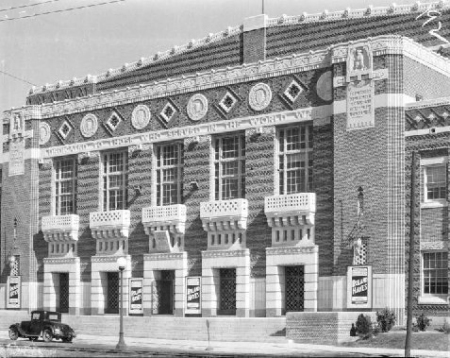
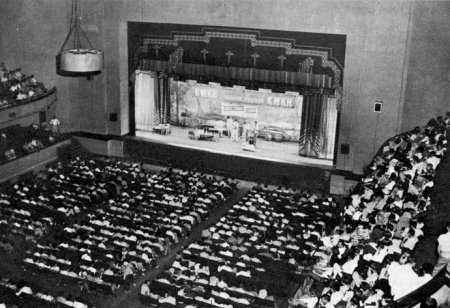

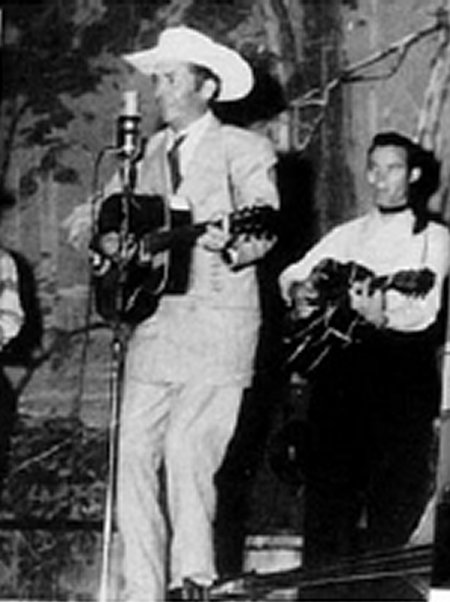
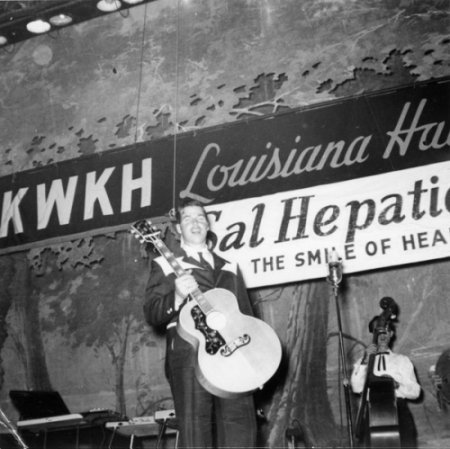
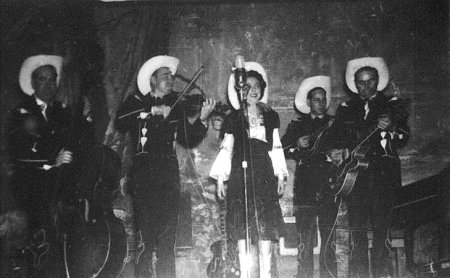
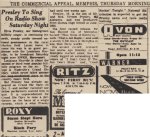 THE COMMERCIAL APPEAL, MEMPHIS, THURSDAY MORNING
THE COMMERCIAL APPEAL, MEMPHIS, THURSDAY MORNING